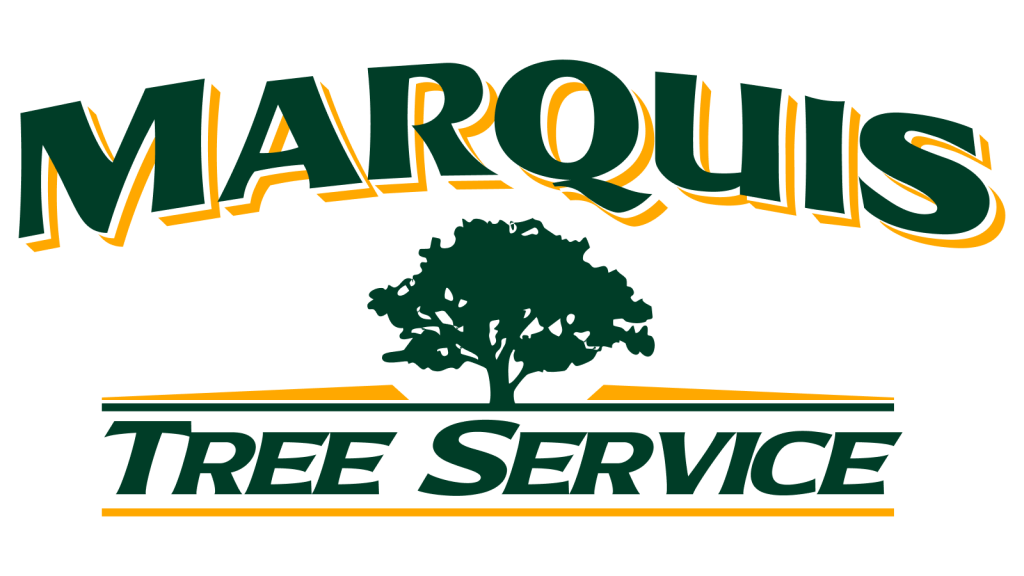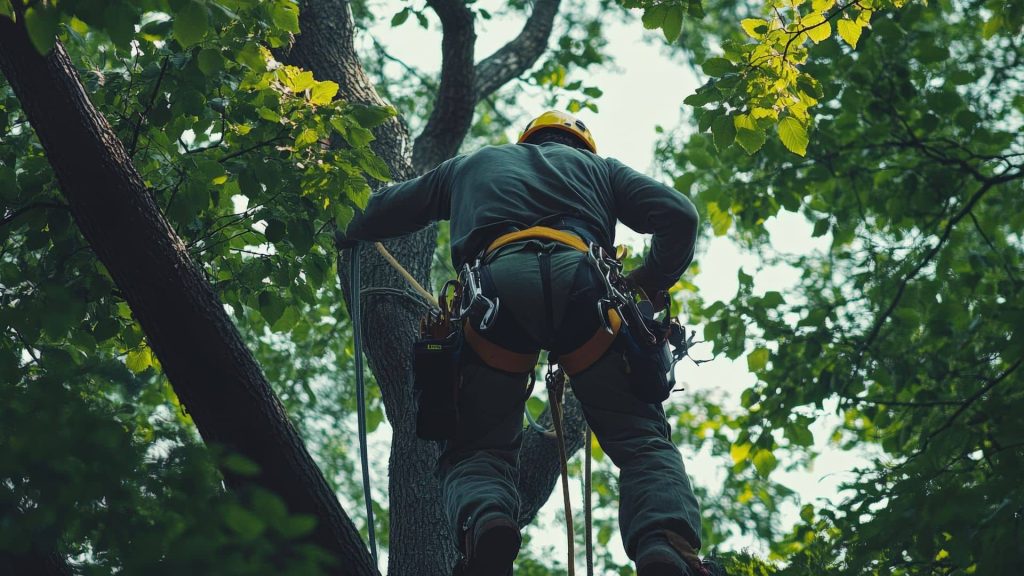The tree preservation vs. removal decision becomes unavoidable when you notice that the magnificent oak tree in your yard is starting to show signs of distress. Perhaps branches are dying back, or you’ve spotted concerning cracks in the trunk. Now you’re faced with a challenging decision that many Billerica homeowners encounter: should you invest in preserving the tree or opt for complete removal? The answer isn’t always straightforward, especially when both your budget and the safety of your property are at stake.
When weighing tree preservation vs. removal, you’re likely concerned about potential property damage if the tree falls during one of Middlesex County’s notorious nor’easters. You may be concerned about the immediate costs versus long-term benefits. You may be uncertain about local regulations in Billerica regarding protected tree species or wetland considerations. Most importantly, you want to make a financially sound decision that doesn’t compromise safety or the aesthetic value of your property.
The decision between tree preservation vs removal isn’t just about immediate costs. It involves weighing various factors specific to your situation, the local environment, and the unique characteristics of Billerica and the surrounding Middlesex County region.
Understanding the Full Cost of Tree Preservation
When considering the option of preserving a tree on your property, it’s necessary to consider all the costs involved beyond the initial investment. The tree preservation vs. removal equation requires a thorough financial analysis of both immediate and long-term expenses. Tree preservation encompasses various treatments and maintenance procedures designed to extend a tree’s life and restore its health.
Immediate Preservation Costs
The upfront costs of tree preservation can vary significantly based on the tree’s condition, size, and the specific treatments required. When documenting tree preservation vs. removal expenses, these typically include:
- Professional assessment fees: Before any preservation work begins, a qualified arborist needs to evaluate the tree’s condition to determine if saving it is viable.
- Treatment for diseases and pests: If your tree is suffering from diseases common in Middlesex County, such as the common Dutch elm disease, or an emerald ash borer infestation, you’ll need to factor in treatment costs depending on the severity and type of treatment required.
- Structural support installation: For trees with significant structural issues, installing cables, braces, or lightning protection systems may be necessary. These installation costs vary depending on the tree’s size and the complexity of the support system.
- Root care and soil management: Improving soil conditions around stressed trees through aeration, deep root fertilization, or mulching costs must be based on the tree’s size and the extent of treatment needed.
Read More: The Most Common Tree Pests in Massachusetts & How to Stop Them
A Cost Analysis Overview of Tree Removal
When preservation isn’t viable or desirable, tree removal becomes necessary. In the tree preservation vs. removal debate, understanding removal costs is essential. The costs associated with removal encompass more than just cutting down the tree; they also include the removal of the stump and any other associated debris.
Base Removal Expenses
The fundamental costs of tree removal in the Billerica area include:
- Removal service fees: Basic removal costs vary depending on the tree’s size, location, and accessibility. Trees near power lines or buildings, which are common in densely populated areas of Billerica, typically cost more to remove safely.
- Cleanup and hauling: Most professional services include cleanup, but extensive debris removal, especially for larger trees on larger properties in areas like East Billerica, may incur additional costs.
- Permit fees: Billerica requires permits to remove certain trees, especially those near wetlands or in protected areas. Permit costs typically range from $25 to $100, plus the time investment required for the application process.
Why Choose Marquis Tree Service for Your Tree Decisions
When facing the tree preservation vs. removal dilemma, working with a knowledgeable local service makes all the difference. Marquis Tree Service brings specialized expertise to Billerica homeowners:
- Comprehensive assessment approach: Unlike companies that might default to recommending removal as the easiest solution, Marquis Tree Service conducts thorough evaluations that consider all viable options, including preservation when appropriate.
- Local knowledge advantage: With deep roots in Billerica and Middlesex County, our team understands local soil conditions, common tree diseases specific to our region, and municipal regulations that affect tree work throughout the area.
- Transparent cost analysis: We provide detailed breakdowns of both immediate and long-term costs for either preservation or removal, helping you make financially sound decisions without unexpected expenses.
- Specialized preservation techniques: Our licensed arborists are trained in the latest tree preservation vs. removal assessment methods that have successfully extended the lives of countless trees throughout Billerica, Bedford, and Burlington.
- Respectful removal practices: When removal is necessary, our team uses techniques that minimize impact on surrounding landscape features and neighboring properties (including stump grinding instead of full root removal), a crucial consideration in Billerica’s established neighborhoods.
The Local Advantage: Working with a Billerica-Based Tree Service
Choosing a local tree preservation service offers significant advantages for homeowners in Billerica and surrounding areas who are considering tree preservation vs. removal services.
Deep Understanding of Local Conditions
Local companies possess invaluable climate expertise, understanding how Middlesex County’s unique weather patterns affect tree health and survival, from harsh winters to increasingly hot and dry summers. This knowledge extends to varying soil conditions, from the sandy soils near the Shawsheen River to the clay-heavy areas in other parts of the region, which require specific approaches to tree care that local companies understand inherently.
Regulatory Familiarity and Compliance
When it comes to regulations, local tree services understand local-specific permitting requirements for tree preservation vs. removal and can efficiently navigate the approval process, particularly regarding the town’s wetland protection regulations. Locally based companies are also familiar with Massachusetts’ conservation areas and the special considerations required for properties adjoining these protected spaces.
Community Investment and Accountability
Local businesses rely heavily on maintaining positive reputations within the community, ensuring higher standards of service and accountability that national chains might not prioritize. This local presence enables faster emergency response times during crises, which is crucial during the severe storms that occasionally affect Billerica and surrounding towns.
Beyond service quality, working with local businesses, like Marquis Tree Service, keeps money within the Billerica economy, supports the community’s overall economic health and creates a cycle of local prosperity that benefits homeowners and businesses alike.
Real-World Examples: Tree Preservation and Removal in Billerica
Understanding how these considerations play out in real situations can help clarify your tree preservation vs. removal decision-making process.
Case Study: Historic Oak Preservation in East Billerica
A homeowner in East Billerica faced a difficult decision regarding a 150-year-old oak showing signs of decline. After a professional tree preservation vs. removal assessment by Marquis Tree Service, a comprehensive preservation plan was implemented.
The strategy included specialized root zone treatment where the soil was amended and aerated to improve root function. Additionally, careful crown reduction was performed with strategic pruning that removed 15% of the canopy to reduce stress on the root system. The arborists also installed support cables to provide structural support and prevent potential limb failure during storms.
Eight years later, the tree continues to thrive, providing shade that reduces annual cooling costs by approximately $400. The preserved tree maintains the property’s historic character and contributes to its market value.
Case Study: Necessary Removal Near the Concord River
A Billerica family living near the Concord River had a large silver maple with extensive decay in its main trunk. Despite their attachment to the tree, the tree preservation vs. removal assessment revealed several concerning issues.
The evaluation identified significant structural compromise, with over 40% of the main trunk having internal decay. The tree’s high-risk location was also problematic as it stood within falling distance of the home and a neighbor’s property. These factors made it a poor candidate for preservation, as the extent of decay made preservation treatments unlikely to succeed. The removal cost included stump grinding and site restoration.
Losing the tree increased summer cooling costs by approximately $350 annually, and the family planted two native river birches as replacements, which will eventually provide similar benefits while posing less risk to the property.
See Also: The Top 5 Reasons Why Trees Die
Making Your Decision: A Practical Approach
When considering whether to preserve or remove a tree on your Billerica property, follow these practical steps for tree preservation vs. removal decision-making:
- Obtain multiple professional assessments: Get evaluations from at least two qualified arborists, preferably from services with extensive experience in Middlesex County.
- Request detailed cost comparisons: Ask for itemized estimates for both preservation and removal options, including long-term maintenance costs for preservation.
- Check local regulations: Consult with Billerica’s Conservation Commission if your property is near wetlands or contains protected species.
- Consider timing factors: Some work is best performed during dormant winter months, while other treatments are more effective during active growth periods.
- Evaluate your long-term plans: Consider how your property use might change over the next 10-15 years and how the tree fits into those plans.
- Factor in property value considerations: Consult with a local real estate professional about how the tree impacts your specific property’s market value.
Tree Preservation vs Removal: Making the Choice That’s Right for You
By considering all of these factors, you can make an educated decision that balances financial considerations with safety needs and aesthetic preferences, ensuring the best outcome for your Billerica property.
Remember that whether you choose preservation or removal, working with a locally owned, experienced tree service like Marquis Tree Service ensures that your tree preservation vs. removal decision will be implemented with the highest standards of care and professionalism, maintaining the beauty and value of your Billerica home for years to come.
Schedule a tree preservation assessment today by contacting Marquis Tree Service. Let our arborists show you the value of a professional tree assessment and help you decide the right course of action for your trees today, tomorrow, and whatever may come along.

